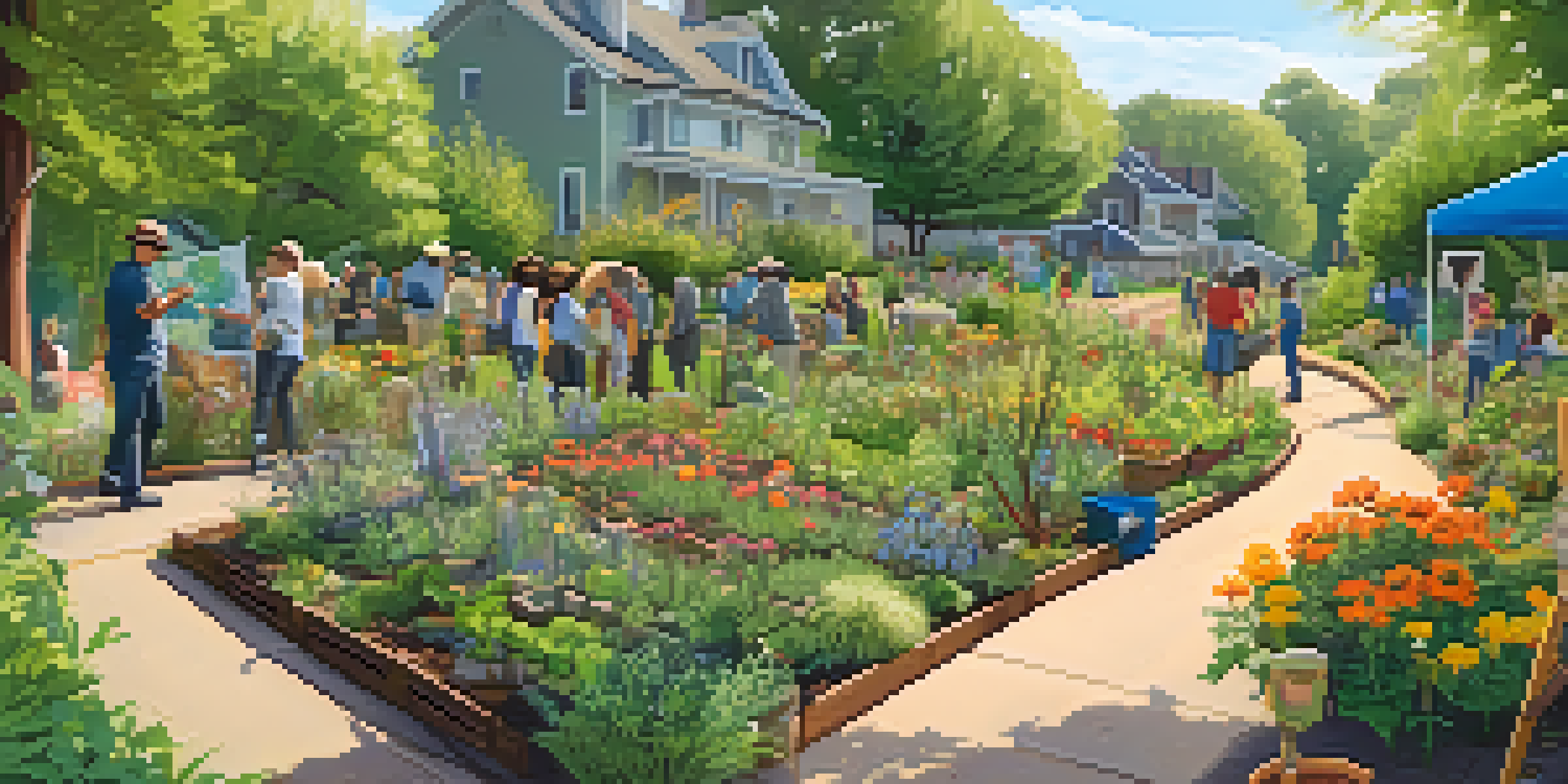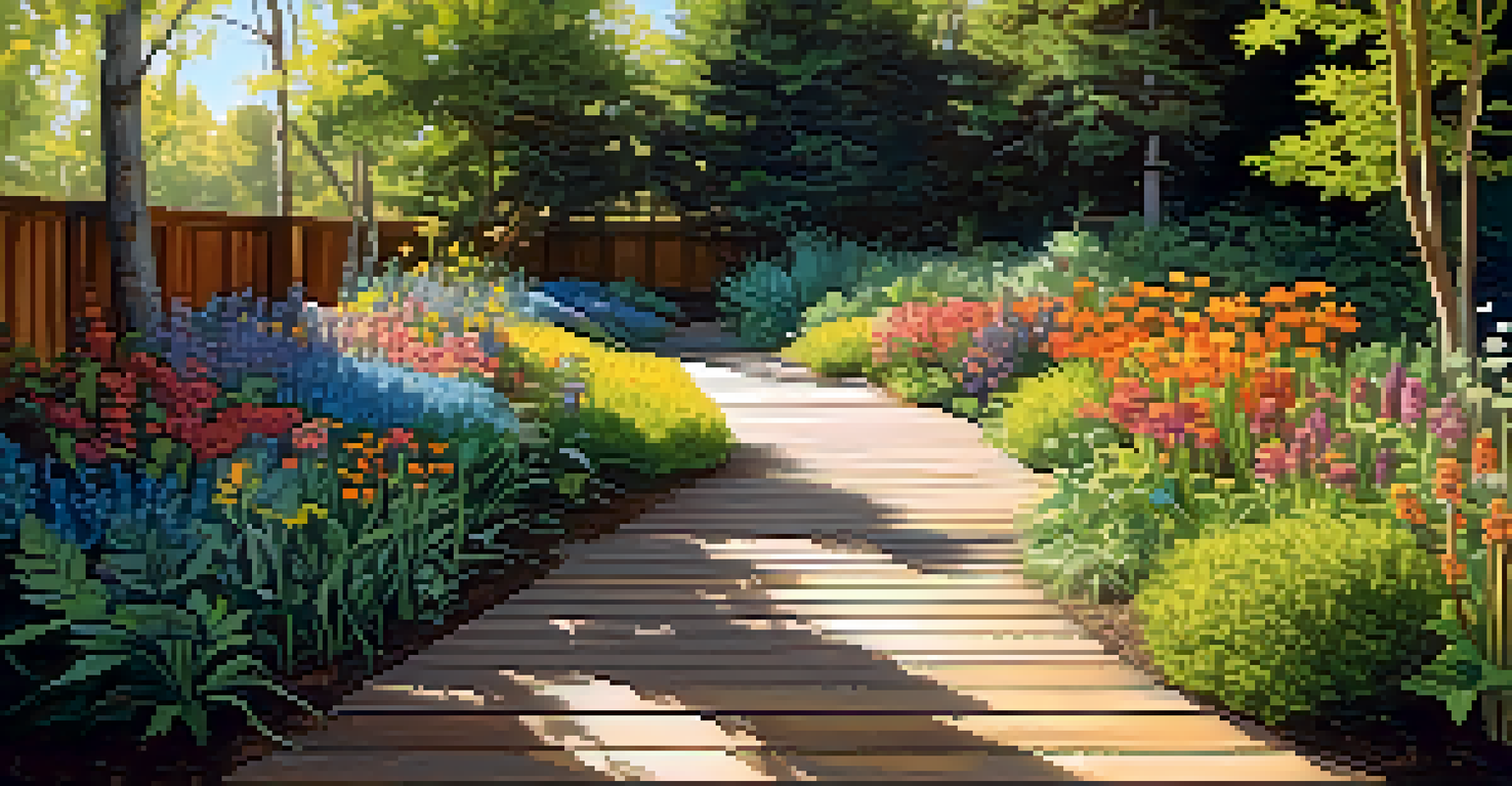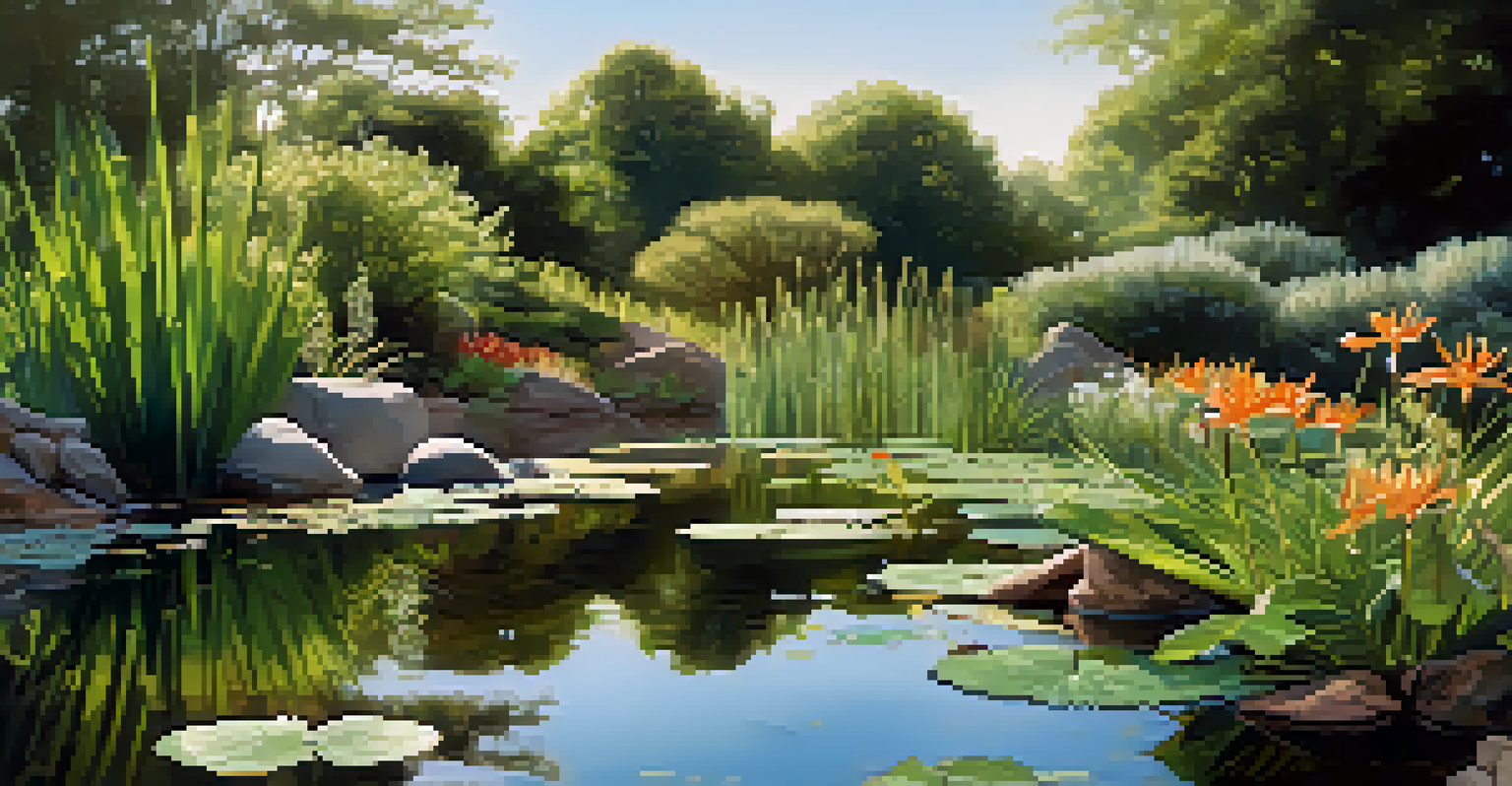Creating Garden Paths that Support Biodiversity

Understanding Biodiversity and Its Importance
Biodiversity refers to the variety of life in a particular habitat or ecosystem. It includes different species of plants, animals, and microorganisms, each playing a unique role. The health of our environment significantly depends on this diversity, as it contributes to ecosystem stability and resilience.
The greatest threat to our planet is the belief that someone else will save it.
When we talk about gardening, fostering biodiversity means creating spaces that support a range of living organisms. This can lead to a balanced ecosystem where plants and animals coexist harmoniously. A diverse garden can also enhance pollination, pest control, and soil health, making it a win-win for both nature and garden enthusiasts.
By understanding the importance of biodiversity, gardeners can make informed choices on how to design their spaces. This sets the stage for creating garden paths that not only serve a functional purpose but also promote ecological benefits.
Choosing the Right Materials for Pathways
When designing garden paths, the choice of materials plays a crucial role in supporting biodiversity. Natural materials like gravel, wood chips, or permeable stones allow water to seep through, helping to maintain soil moisture and supporting plant life. Avoiding concrete or asphalt can prevent runoff, which often leads to water pollution.

Additionally, the right materials can provide habitats for various organisms. For example, wooden pathways can harbor beneficial insects, while gravel can create a microhabitat for ground-dwelling species. This thoughtful material selection encourages a thriving ecosystem right beneath your feet.
Biodiversity Boosts Ecosystem Health
Fostering biodiversity in gardens enhances ecosystem stability, improves pollination, and supports soil health.
By opting for eco-friendly materials, you not only enhance the aesthetic appeal of your garden but also contribute positively to the environment. It's a simple yet effective way to align your gardening efforts with nature's needs.
Designing Paths for Easy Access and Wildlife Movement
Creating paths in your garden should prioritize accessibility for both humans and wildlife. Curved, meandering paths can add visual interest while allowing small animals to navigate easily. Straight paths may seem efficient, but they can disrupt the natural flow of wildlife and plant growth.
Nature does not hurry, yet everything is accomplished.
Consider incorporating wider areas along your paths where plants can flourish. This not only provides food and shelter for various species but also creates a more inviting space for garden visitors. The integration of native plants alongside paths can further enhance biodiversity by attracting pollinators and other beneficial wildlife.
Ultimately, the design of your garden paths can influence how wildlife interacts with your space. By prioritizing movement and accessibility, you create a welcoming environment for both people and nature.
Incorporating Native Plants Alongside Pathways
One of the best ways to support biodiversity in your garden is by incorporating native plants along your pathways. Native plants are adapted to the local climate and soil, making them easier to maintain and more resilient. They also provide essential resources for local wildlife, such as food and habitat.
By planting native species, you can attract a variety of pollinators, including bees and butterflies, which play a crucial role in maintaining healthy ecosystems. Additionally, these plants can help control pests naturally, reducing the need for chemical interventions that can harm delicate wildlife.
Use Eco-Friendly Path Materials
Choosing natural materials for garden pathways promotes moisture retention and provides habitats for beneficial organisms.
In essence, native plants not only beautify your garden paths but also serve as vital components of a thriving ecosystem. Their presence can significantly enhance the ecological value of your garden.
Creating Microhabitats with Pathway Features
Microhabitats are small, specialized environments that support specific forms of life. By adding features to your garden pathways, such as rocks, logs, or water elements, you can create these important niches. For instance, a small pond can attract frogs and insects while rocks can provide warmth and shelter for reptiles.
These features can serve as refuge spots for various organisms, especially during extreme weather conditions. Additionally, they can encourage diverse plant growth, as different species thrive under varying conditions. This diversity enriches the overall ecosystem in your garden.
In short, thoughtful incorporation of microhabitats along your paths can foster a rich tapestry of life. These small changes can lead to significant ecological benefits, making your garden a haven for biodiversity.
Maintaining Garden Paths for Sustainability
Once your garden paths are in place, regular maintenance is key to ensuring they support biodiversity. This includes managing weeds, which can compete with native plants for resources. However, instead of using harsh chemicals, consider organic methods such as mulching or hand-pulling to keep your paths healthy.
Additionally, maintaining the integrity of your pathways is crucial. Regularly inspecting for erosion or damage and addressing these issues can prevent disruption to the surrounding ecosystem. A well-maintained path not only looks good but also functions effectively in supporting wildlife.
Engage Community in Biodiversity
Involving the community in gardening efforts amplifies knowledge sharing and fosters collective commitment to ecological health.
In essence, sustainable maintenance practices contribute to the longevity of your garden paths and the biodiversity within your space. By committing to regular care, you can ensure that your garden remains a thriving environment for years to come.
Encouraging Community Involvement in Biodiversity Efforts
Creating a garden that supports biodiversity can be even more impactful when you involve your community. Organizing workshops or neighborhood events can educate others about the importance of biodiversity and how they can contribute. Shared knowledge can lead to more gardens that prioritize ecological health.
Community gardens can also serve as excellent platforms for collaboration. By working together, neighbors can share resources, plants, and ideas, creating a larger network of biodiversity efforts. This not only fosters a sense of community but also amplifies the positive environmental impact.

Ultimately, encouraging community involvement is about building connections and creating a collective commitment to nurturing biodiversity. Together, we can create gardens that benefit both people and the planet.